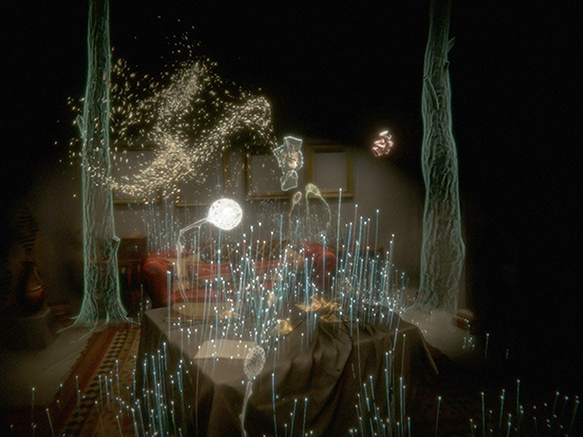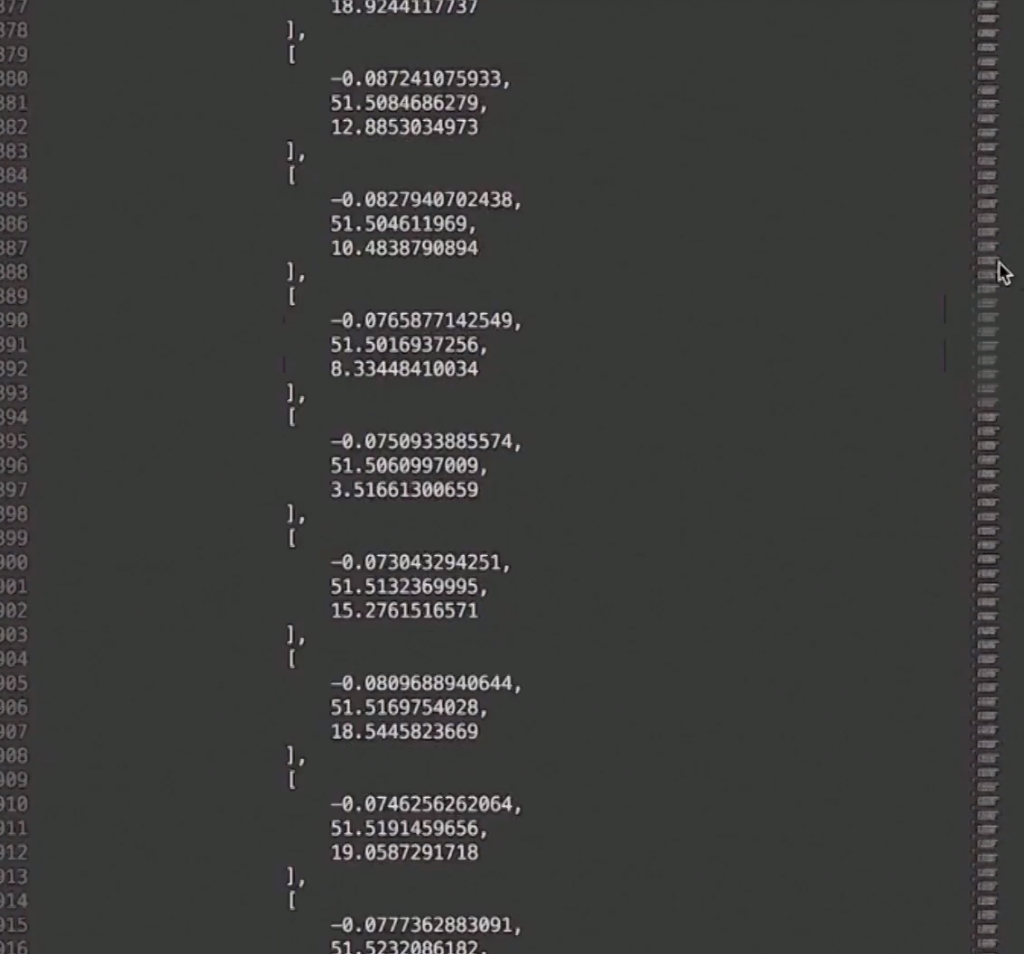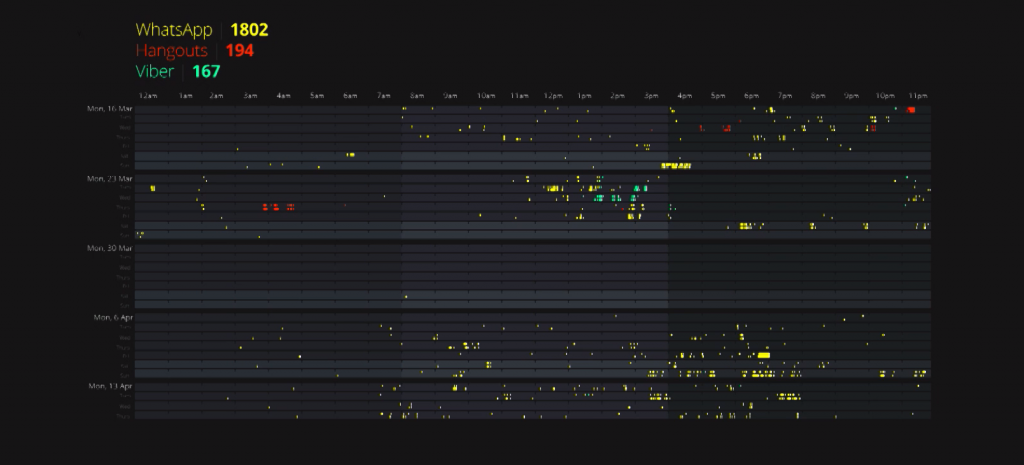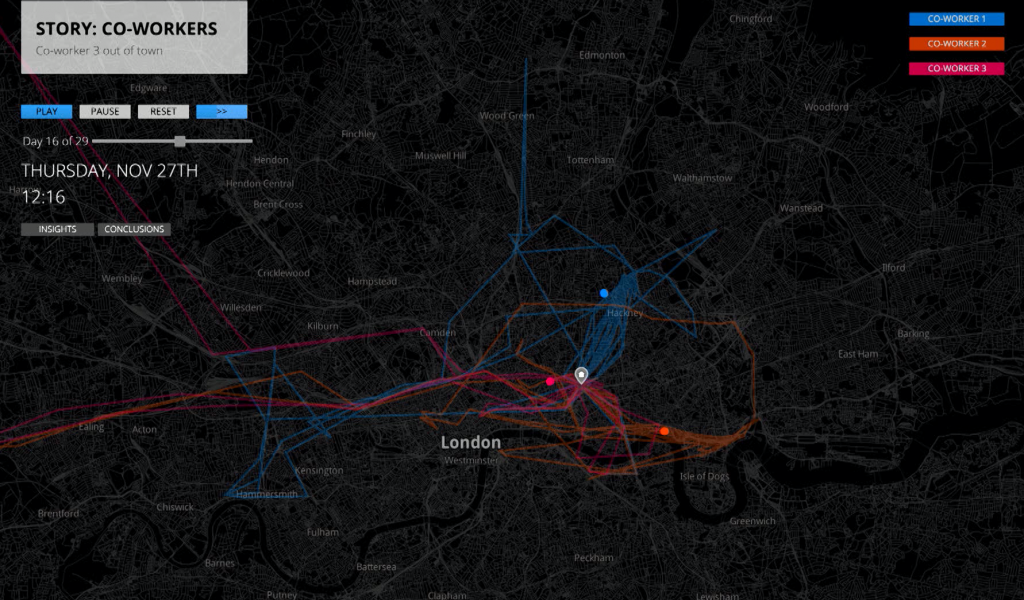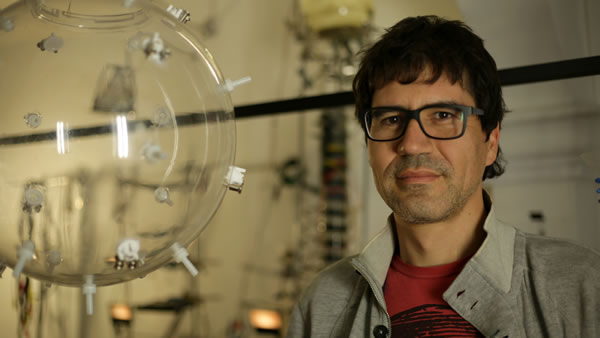Refik Anadol, Space in the Mind of a Machine, 2019.
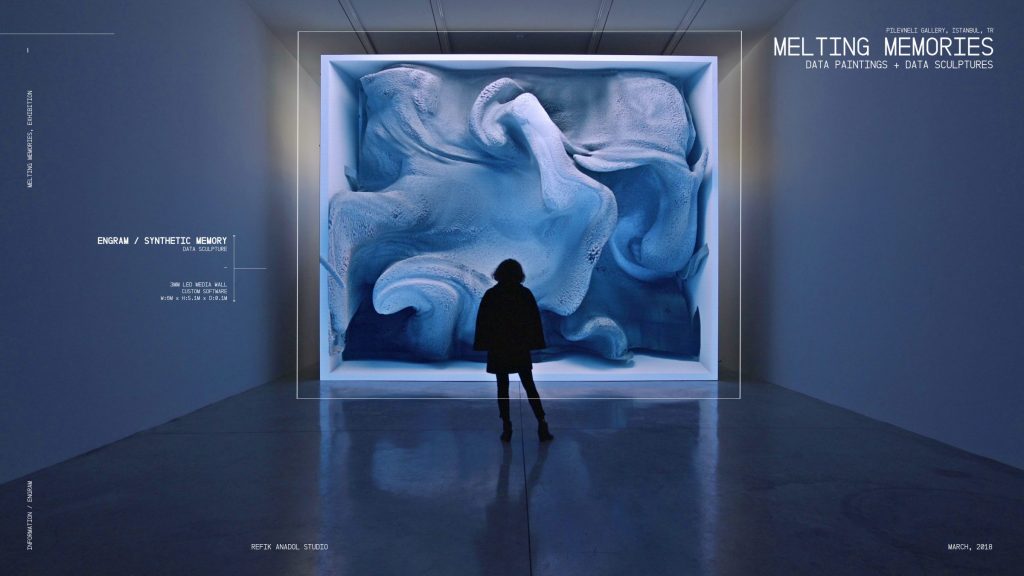
Refik Anadol is a media artist from Istanbul, Turkey who works on site-specific public art, parametric computer design, and interactive audio performances in his installations. Anadol currently has a Masters of Fine Arts from both California and Istanbul. Anadol works on creating installations that encompass aspects of architecture, media arts, and machine learning to create uniquely interactive art pieces that respond to a multitude of combinations of machine learning and traditional media.
Anadol’s dedication to creating site-specific art is inspiring because it uses public spaces as his canvas and muse for his designs. He mentions in the talk how a public space often has no formal entrance, beginning, or end, but rather exists with the environment around it. Taking that idea and then using interactive computation design for his installations allows for his work to not simply be on display, but become a part of the space in which it exists and interacts with the people passing by.
Specifically, his piece Melting Memories, a data sculpture, fascinated me in how it visualizes one of our most private data, our memories. Anadol found common patterns in the results of our brain activity and used this data set for the programming of the sculpture by using noise functions. This project was super interesting in how it adapts frontal lobe activity in the brain into a painting that creates a variety of moves and patterns through noise. Using computational design, Anadol is able to reflect our thoughts in a language that is not verbal, and thus makes intimate moments in a public abstracted performance.
Anadol presents his work by defining his explorations and goals for spatial thinking and translation before discussing each project. By understanding his intentions for a project, it becomes clear to us how he uses his media background to execute those ideas.
![[OLD FALL 2020] 15-104 • Introduction to Computing for Creative Practice](../../../../wp-content/uploads/2021/09/stop-banner.png)
